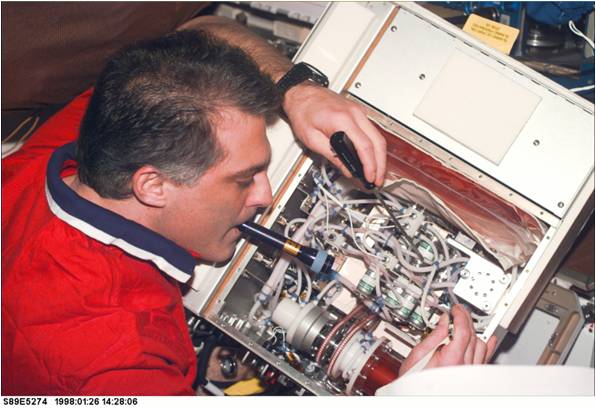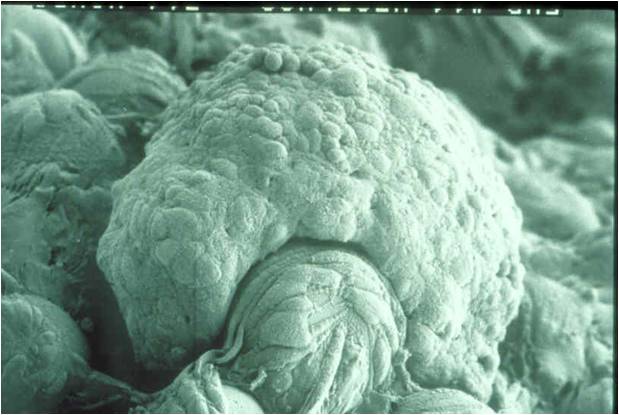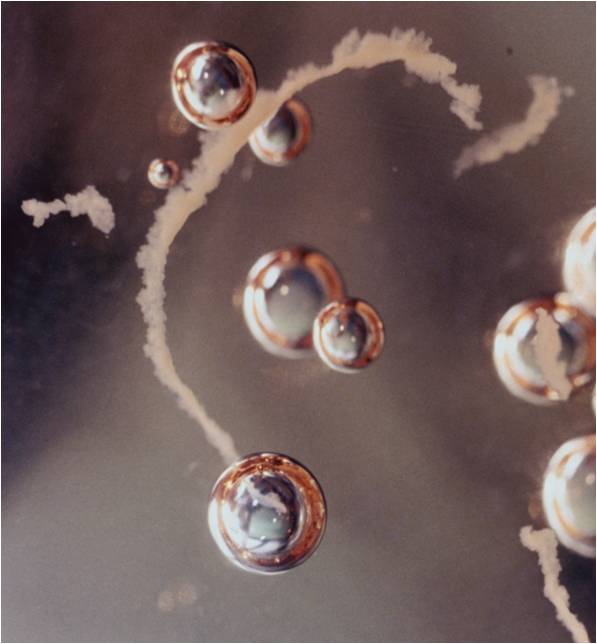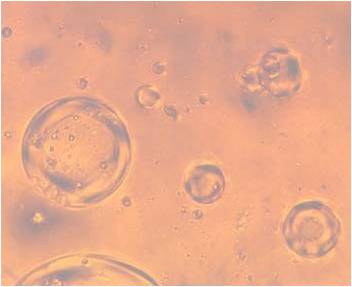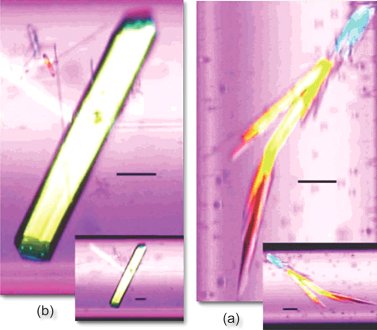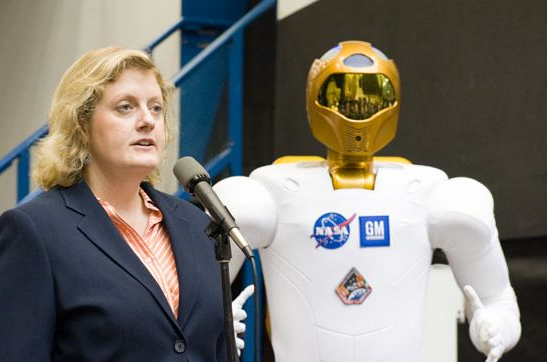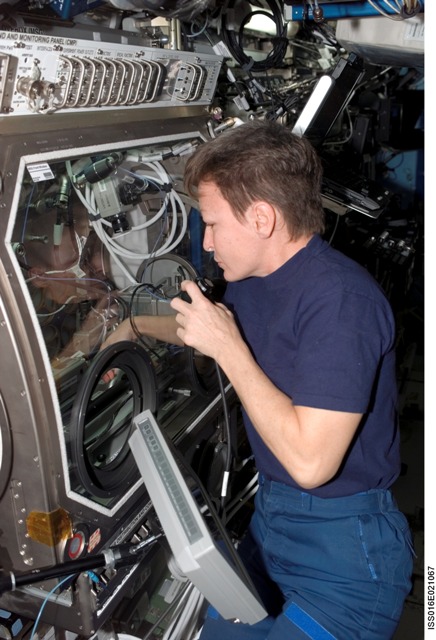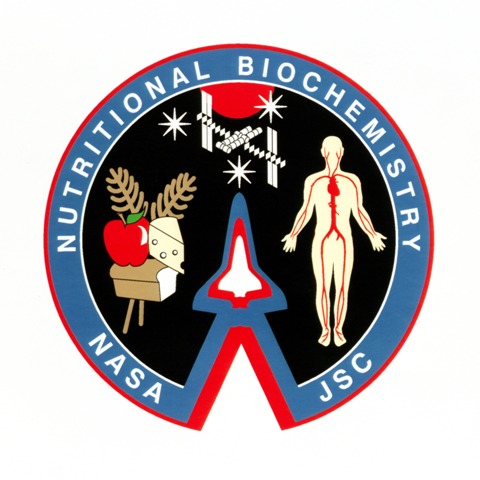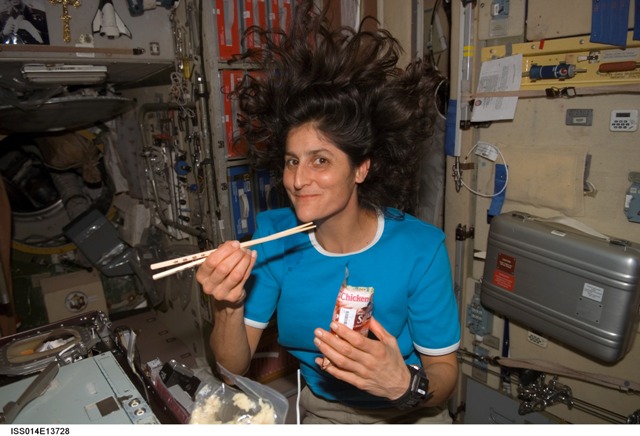Original Post March 02, 2011
This week, comments from guest blogger and International Space StationNational Laboratory Manager Marybeth Edeen, as she reflects on ways to helpresearchers reduce the time from concept to implementation for space stationexperiments.
Have you ever heard complaints about how long it takes tofly investigations in space? There has been a lot of discussion about how longit takes to get research from concept to implementation. Numerous people willtell you that it cannot be done in under 1 year or even as long as 5 years. Withrecent changes put in place with the National Laboratory Office, however, we havebeen successful in getting payloads from concept to implementation in as littleas 6 months.
The National Laboratory Office guides payload developers througha feasibility process to evaluate research ideas to determine how quickly thestation could accommodate a given payload. The first step is a triage meeting,where the research team and the payloads office experts discuss a concept todetermine the complexity of the research. Depending on the intricacy, we canguide the developers to use systems that are already in place, which cansignificantly speed up getting the research aboard the station. In many cases,we are able to slip the developer payload into a prepared research plan, using placeholderswe have prepared in advance. The research plan placeholders have certain capabilities(e.g., size, weight, etc.) set aside to reserve predefined spots for payloads.This way, when the time comes, we can determine which new payloads fit into theplaceholders.
Additionally, the Payloads Office has a “lean process,”which enables payloads to go through the integration process and be put onorbit ready for operations in as little as 6 to 7 months; from the time it wasidentified as available for launch. The National Laboratory Office sponsoredsome payloads that went into orbit in as little as 6 months, but that is notthe norm at this time. A developer is already in the assembly process on theirend for the payload, rather than in the development stage of their idea. Anamazing turnaround like this is for known re-flight science, not for newpayloads being assembled.
What we are trying to do with National Lab is to use theprocesses and manage the integration in such a way that we can bring things inlater than the normal flow. This is contingent on the National Laboratory modelof the commercial or government agency having their funding and developmentready to bring to the table. If they are waiting for anticipated funds to moveforward with development, this significantly delays the progress.
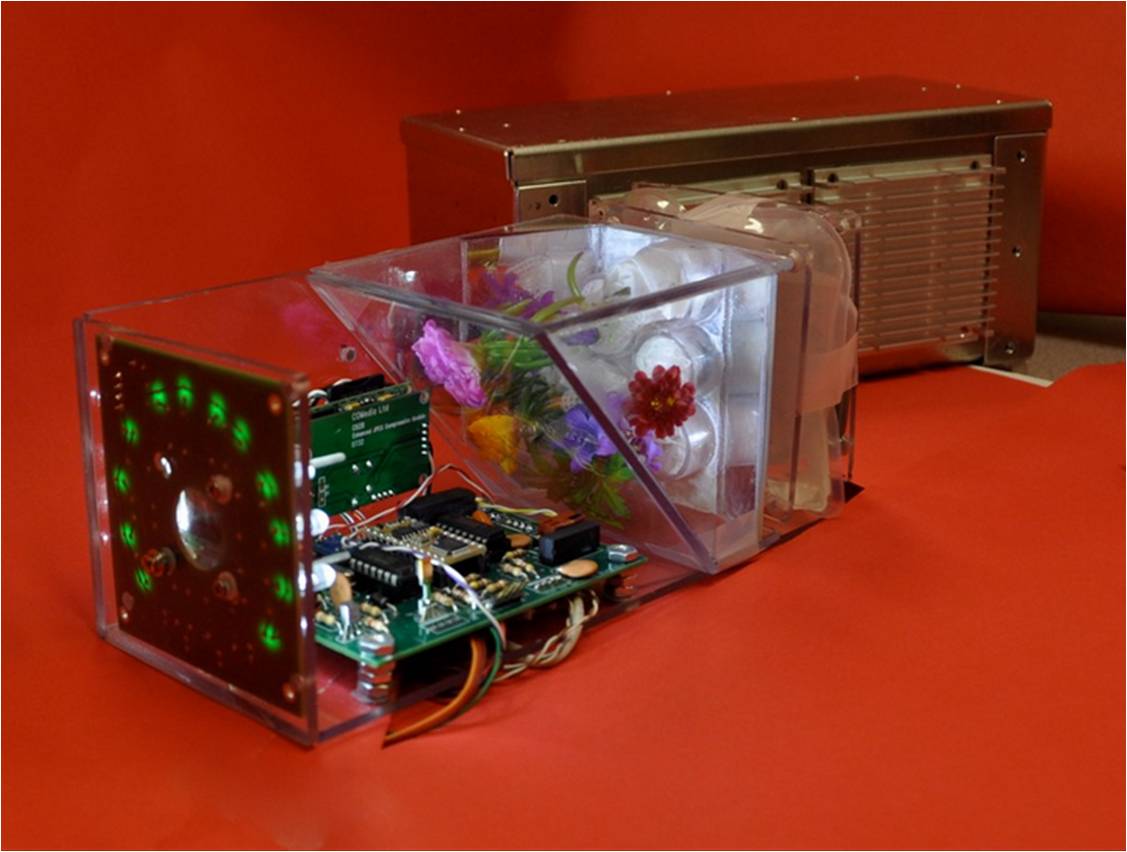
This image shows six seed wells inside of the NanoRacks-CubeLabs 6-plant
growth chamber, a student-designed investigation by Valley Christian High
School in San Jose, CA.
(Image courtesy of Werner Vavken)
One such developer who succeeded in an accelerated timelinewas the NanoRacks-CubeLabs team. The proposal for this commercially sponsoredpayload was submitted in July of 2009. A Space Act Agreement was signed inSeptember and by December of the same year, they had hardware delivered to the KSCfor launch. The developer team had already gone into the design work beforeapproaching NASA, but had not built the hardware at that point. They enteredhardware production in parallel with the integration process in order to getthe hardware certified for flight by December.
On our side, the National Laboratory Office is trying toshorten the templates and build flexibility into the process. We want to enabledevelopers to determine their final plan later in the process, when necessary.There are only so many payloads you can run through the process this way,however, to avoid delaying the details of the planning for everyone involved. Wehave to prepare our research plans 18 months in advance, so we look at this andsay: “hmm, there are three guys wanting this type of experiment, let’s toss in aplaceholder for that” or “this group has been talking to us frequently, hastheir funding lined up, and seems pretty serious.” We are trying to identifyand create spots for payloads that are likely to show up in 18 months ready togo. Rather than advertising these placeholders, we try to identify them andfill them according to the interest we see on the horizon. We take an educatedguess when creating these placeholders to prepare for our research ahead.
On the NationalLaboratory Web page, under Key Resources, payload developers can find theheading of Helpful Documents where our lean process documentation will post.We also posted the PayloadDevelopers and Principal Investigators Payload Planning, Integration andOperations Primer, so that researchers know what NASA needs from them atwhich times and why. This gives people an idea of what to bring to the tablebefore they talk to us, allowing them to move more swiftly through the process.This primer also cites changes for those using the lean process, to help savetime. More documents are continuing to post—some are still going through theapproval processes—so interested developers should continue to check back. Thislean process is new, so we are beta testing the documented process. Once we havebeen through it a few times, we can make changes and continue to improve it.
The completion of ISS gives the crew a lot more time to workscience, so the faster we can get things up, the more science they can do. Also,there is more available upmass on the transport vehicles to transport resourcesfor experiments. It opens up more opportunities for our payload developers,especially if using existing hardware already on orbit. If you are interestedin doing research on station, give us a call. We are always open and lookingfor feedback in our processes to make them simpler and more user friendly forour researchers, so they can continue to get their results in a timely mannerand make great discoveries to benefit us all.
Marybeth Edeen is themanager of the ISS National Lab Office. She has a B.S. in Chemical Engineering from the University of Texas andan M.S. in Chemical Engineering from Rice University. She has worked at NASA for 24 years.



